Antibiotics are among the most common and crucial medications used in veterinary medicine. When prescribed correctly, they can help dogs recover from a wide range of bacterial infections. However, misuse can lead to serious consequences like antibiotic resistance, harmful side effects, and ineffective treatment.
“Antibiotics can save lives, but they must be used with precision and care,” says Dr Abhishek Choudhary, BVSc & AH, a practicing veterinarian. “The goal is to treat the infection without harming the pet or contributing to resistance.”
This guide will address all the common questions pet parents ask about antibiotics for dogs, including whether dogs need antibiotics for certain diseases.
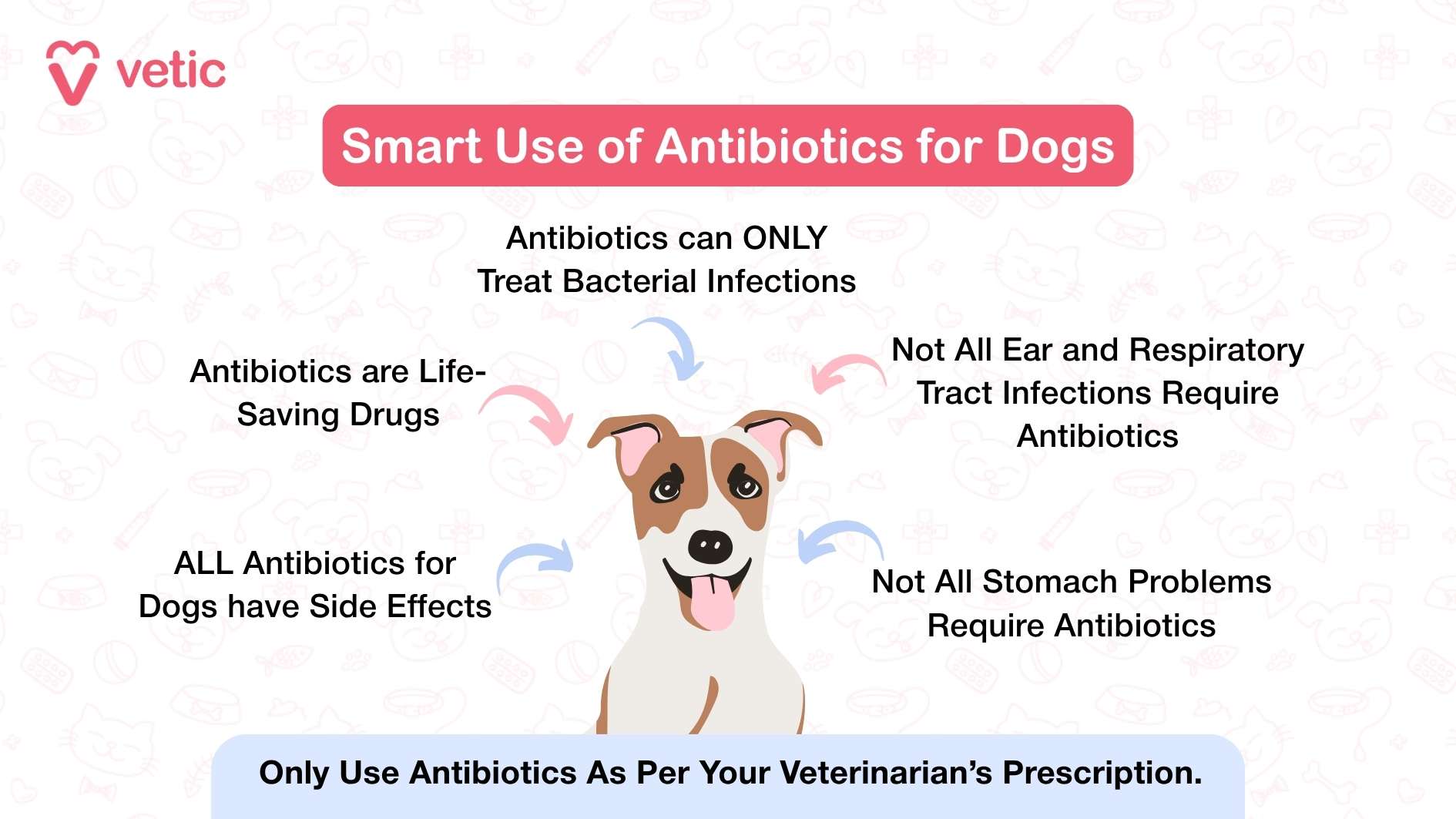
What are antibiotics for dogs?
Antibiotics are drugs that kill or inhibit bacterial growth, used to treat infections such as skin pyoderma, urinary tract infections, and pneumonia. They differ by spectrum (broad vs. narrow) and mechanism (e.g., β-lactams disrupt cell walls). Accurate diagnosis ensures antibiotics target the right pathogen.
How do antibiotics work in dogs?
Different classes act by disrupting bacterial cell walls (penicillins, cephalosporins), inhibiting protein synthesis (clindamycin, doxycycline), or preventing DNA replication (enrofloxacin). These mechanisms selectively harm bacteria without damaging host cells. Choosing an antibiotic based on culture and sensitivity reduces misuse.
Are antibiotics safe for dogs?
Most antibiotics are safe when prescribed correctly by a veterinarian. “Every antibiotic has potential side effects, but when used responsibly, the benefits far outweigh the risks,” notes Dr Abhishek Choudhary.” Side effects such as vomiting or diarrhea occur in fewer than 10 percent of cases. Rarely, hypersensitivity reactions to penicillins or sulfonamides may develop. Always follow veterinary advice to minimize adverse events.”
Can dogs take the same antibiotics as humans?
Some human antibiotics (e.g., amoxicillin, doxycycline) overlap with veterinary use, but dosing, formulations, and additives differ. Human brands may contain xylitol or inappropriate flavorings for dogs. Never substitute without consulting a vet, as dosage adjustments and palatability matter. Improper human-to-canine use can cause toxicity or treatment failure.
Do dogs need a prescription for antibiotics?
Yes. Antibiotics are prescription-only under the Veterinary Medicines Regulations; veterinarians must confirm bacterial infection before prescribing. Dispensing without a vet’s oversight risks resistance and adverse effects. Over-the-counter human products are not suitable substitutes.
When should antibiotics be given to dogs?
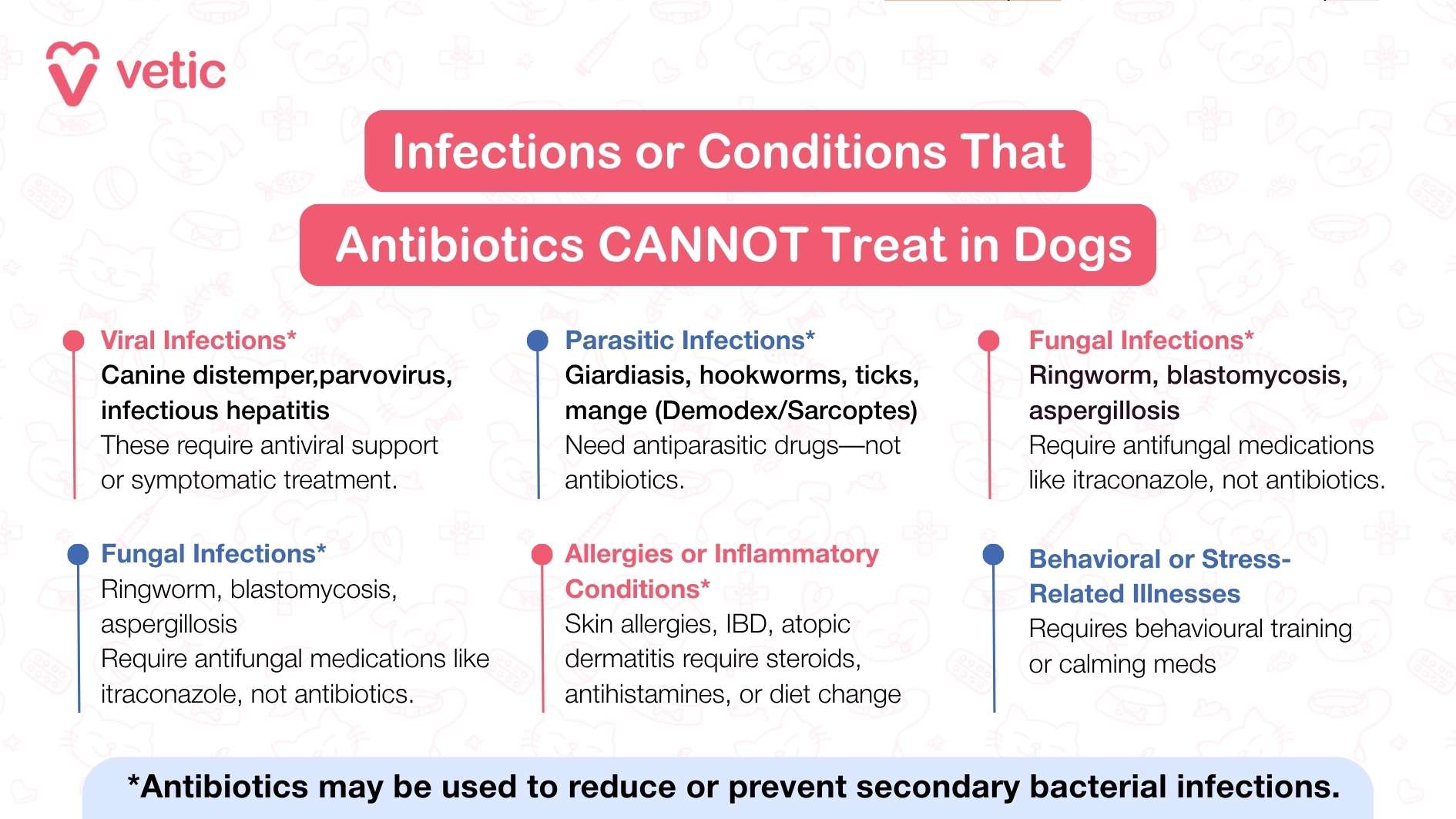
Antibiotics should only be given when there’s confirmed or strongly suspected bacterial infection. Administering empirically for wounds or severe infections may be justified initially, but culture should follow. Delaying appropriate therapy risks sepsis and complications. Viral, fungal, or parasitic diseases do not respond to antibiotics.
How long do antibiotics take to work in dogs?
Most antibiotics reduce bacterial load within 24–48 hours; clinical improvements may be seen by day 3. Deep-seated infections can require weeks of therapy. Observe your dog daily; if no improvement within 48 hours, revisit the vet. Always complete the full course to eradicate pathogens.
Why do dogs need antibiotics for certain infections?
Antibiotics clear bacterial pathogens, prevent systemic spread, and reduce morbidity. In conditions like pyoderma or urinary tract infections, antibiotics restore normal function and prevent septicemia. Proper use also preserves future drug efficacy by preventing resistance.
What are natural alternatives to antibiotics for dogs?
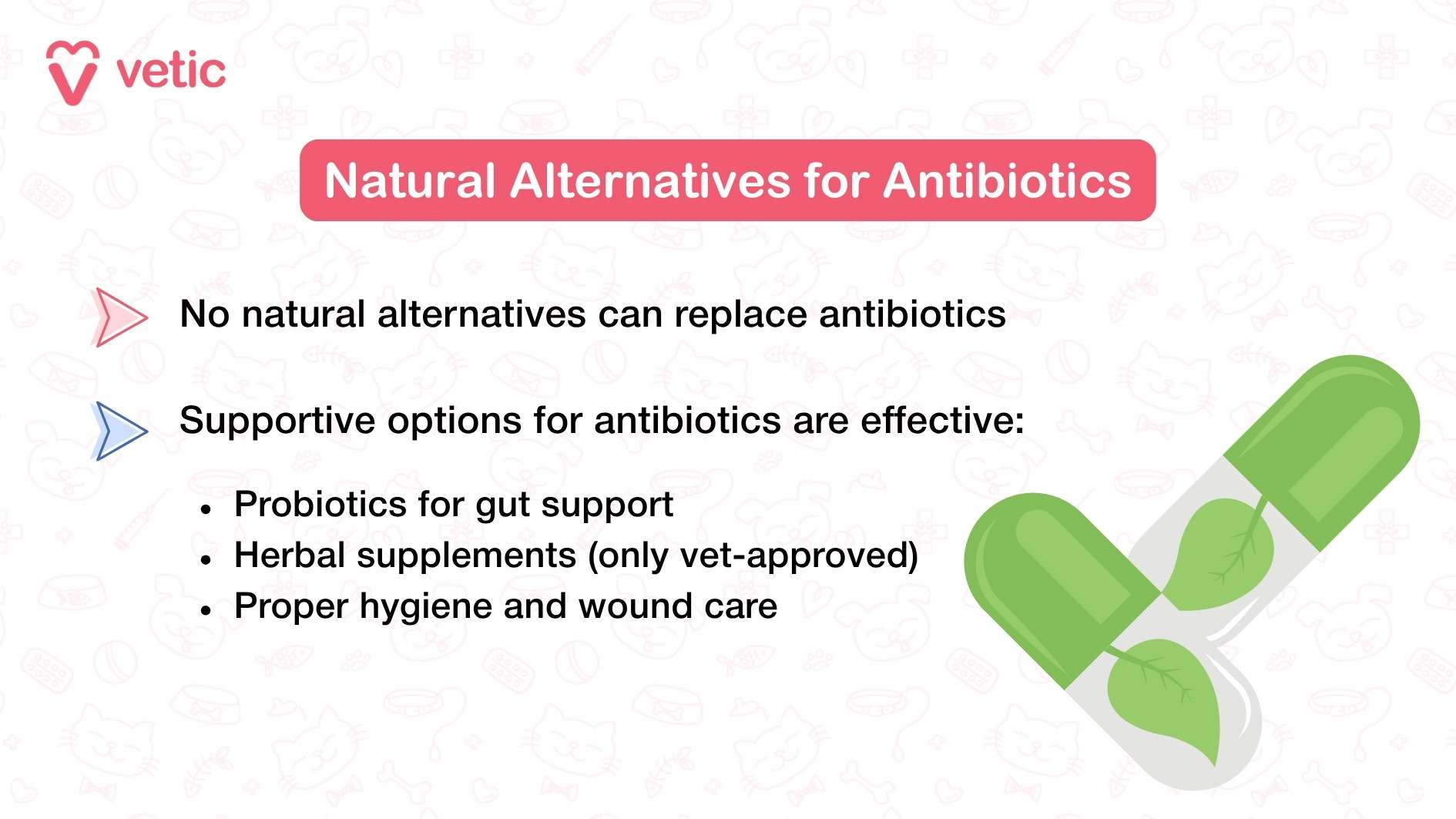
Natural options (honey, turmeric, oregano oil) exhibit mild antimicrobial or anti-inflammatory properties in vitro. However, none match the efficacy or spectrum of prescribed antibiotics; they can be supportive adjuncts only. Natural remedies should never replace veterinary-prescribed antibiotics for confirmed bacterial infections. Always discuss safe dosages with your vet.
How do veterinarians choose the right antibiotic for a dog?

Vets consider infection site, likely pathogens, culture & sensitivity results, and patient factors such as age and organ function. They select from Category D (Prudence) drugs first (e.g., amoxicillin, cefalexin) per EMA guidelines. Targeted therapy based on culture reduces broad-spectrum use. Pharmacokinetics and pharmacodynamics guide dosing and duration.
Antibiotic Use and Safety
What happens if I give my dog antibiotics without a vet’s advice?
“Antibiotics should never be used without a diagnosis,” emphasizes Dr Abhishek Choudhary. Unsupervised antibiotic use risks misdiagnosis, underdosing, or using the wrong drug, leading to treatment failure, GI upset, or resistance. Resistant bacteria may emerge, requiring more potent drugs later. Always obtain a proper diagnosis and prescription.
Can overuse of antibiotics harm dogs?
Yes. Repeated courses can disrupt gut microbiota, causing diarrhea, colitis, and malabsorption. Overuse also increases the risk of antimicrobial resistance, making future infections harder to treat. Monitor biochemical parameters during prolonged therapy to reduce toxicity.
Are antibiotics bad for dogs in the long run?
Not if used appropriately. However, chronic or unnecessary use may lead to gut dysbiosis, antibiotic-resistant flora, and reduced efficacy of standard treatments. Periodic review of antimicrobial policies and stewardship programs helps maintain long-term health.
What’s the safest antibiotic for dogs?
No single antibiotic is universally safest. Penicillins (amoxicillin-clavulanate) and first-generation cephalosporins (cephalexin) are often preferred due to low resistance and minimal side effects. Patient-specific factors (allergies, organ function) ultimately determine safety.
Does my dog need antibiotics even if he seems better?
No. Stopping early risks incomplete eradication, relapse, and resistance development. Clinical improvement may lag behind bacterial clearance; finish the entire course. Even if symptoms resolve, remaining bacteria can mutate and survive, rendering future treatments less effective.
Are there antibiotics specifically made for dogs?
Yes. Veterinary-labelled formulations like cefpodoxime proxetil and enrofloxacin have dosing, palatability, and safety profiles tailored for canines. Human formulations require cautious off-label dosage adjustments by vets.
Can puppies be given antibiotics safely?
Yes, but dosage and drug selection must consider growth plate sensitivity and organ maturity. Fluoroquinolones (Enrofloxacin, Ciprofloxacin, Ofloxacin, Levofloxacin) are avoided in skeletally immature puppies due to cartilage risks. Amoxicillin and cephalexin are generally safe in puppies over 6 weeks old. Monitor young patients closely for GI upset and adjust dosages by weight.
What antibiotics are safe for pregnant or lactating dogs?
Penicillins (amoxicillin), first-generation cephalosporins (cephalexin), and erythromycin are considered relatively safe due to minimal placental transfer. Tetracyclines and aminoglycosides are contraindicated.
Can dogs develop resistance to antibiotics?
Yes. Repeated or inappropriate antibiotic use selects for resistant bacterial strains, making future infections harder to treat. Horizontal gene transfer accelerates resistance spread among commensal and pathogenic bacteria. Antimicrobial stewardship is crucial to preserve drug efficacy.
What is antimicrobial resistance in dogs?
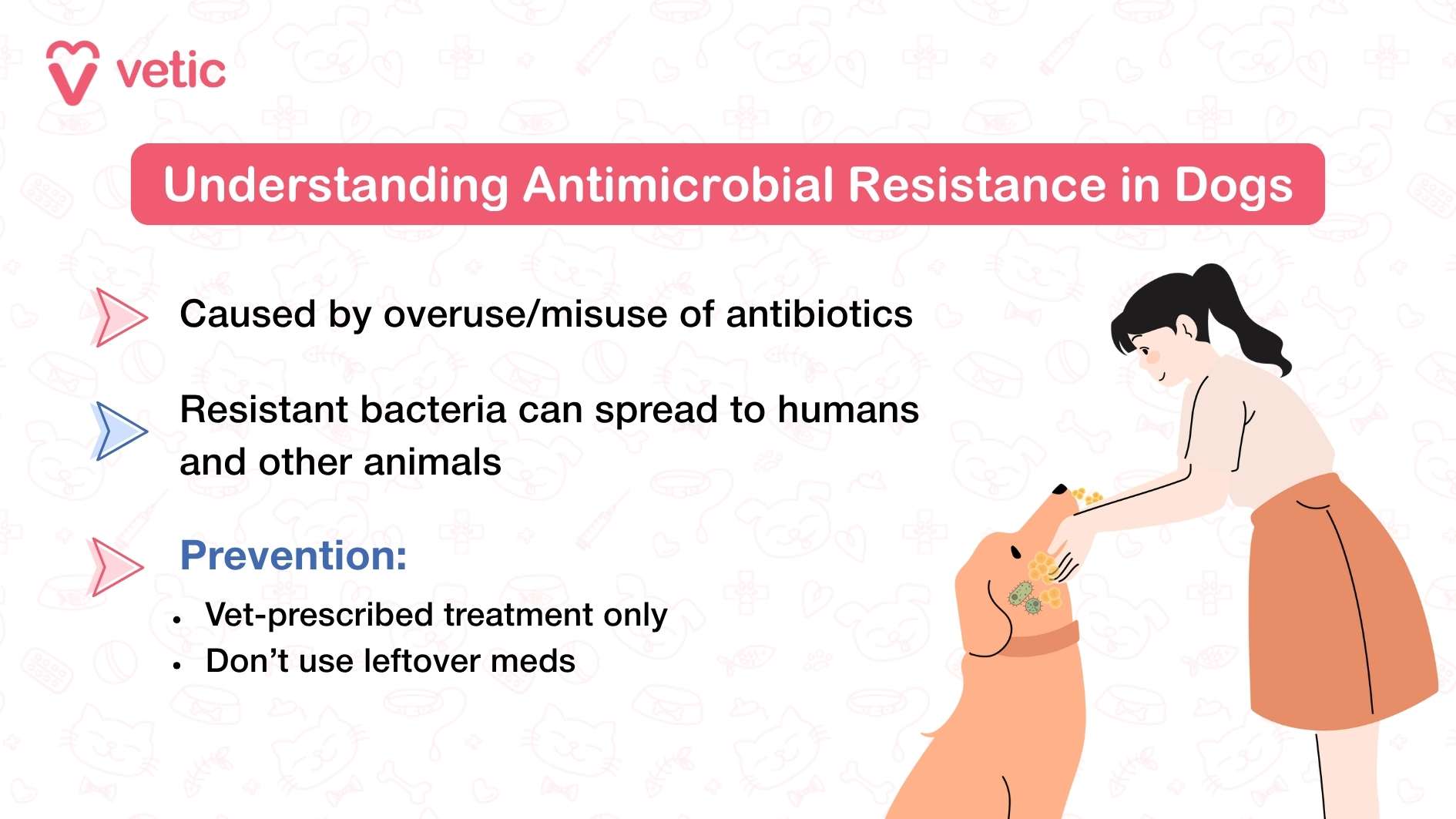
Antimicrobial resistance occurs when bacteria mutate or acquire genes that render antibiotics ineffective. MRSA and ESBL-producing E. coli have been isolated from canine patients. Surveillance and judicious use are paramount.
Dosage and Administration of Antibiotics for Dogs
How is the right dose of antibiotics determined for dogs?
Veterinarians calculate dosage based on weight, infection severity, and pharmacokinetics. For example, cephalexin at 20 mg/kg orally every 12 hours for pyoderma. Organ function may necessitate adjustment. Precision dosing minimizes toxicity and resistance. https://www.msdvetmanual.com/multimedia/table/dosages-of-cephalosporins
What should I do if I miss giving my dog a dose of antibiotics?
If within 50 percent of the next scheduled time, omit the missed dose to avoid overdosing. If beyond that window, administer immediately and continue the normal schedule. Never double the dose without vet approval. Maintaining consistent plasma levels prevents resistance.
Can I give antibiotics with food or water?
Many antibiotics are best given with food to minimize GI upset; others require an empty stomach for optimal absorption. Always follow label and vet instructions. Incorrect administration can reduce bioavailability.
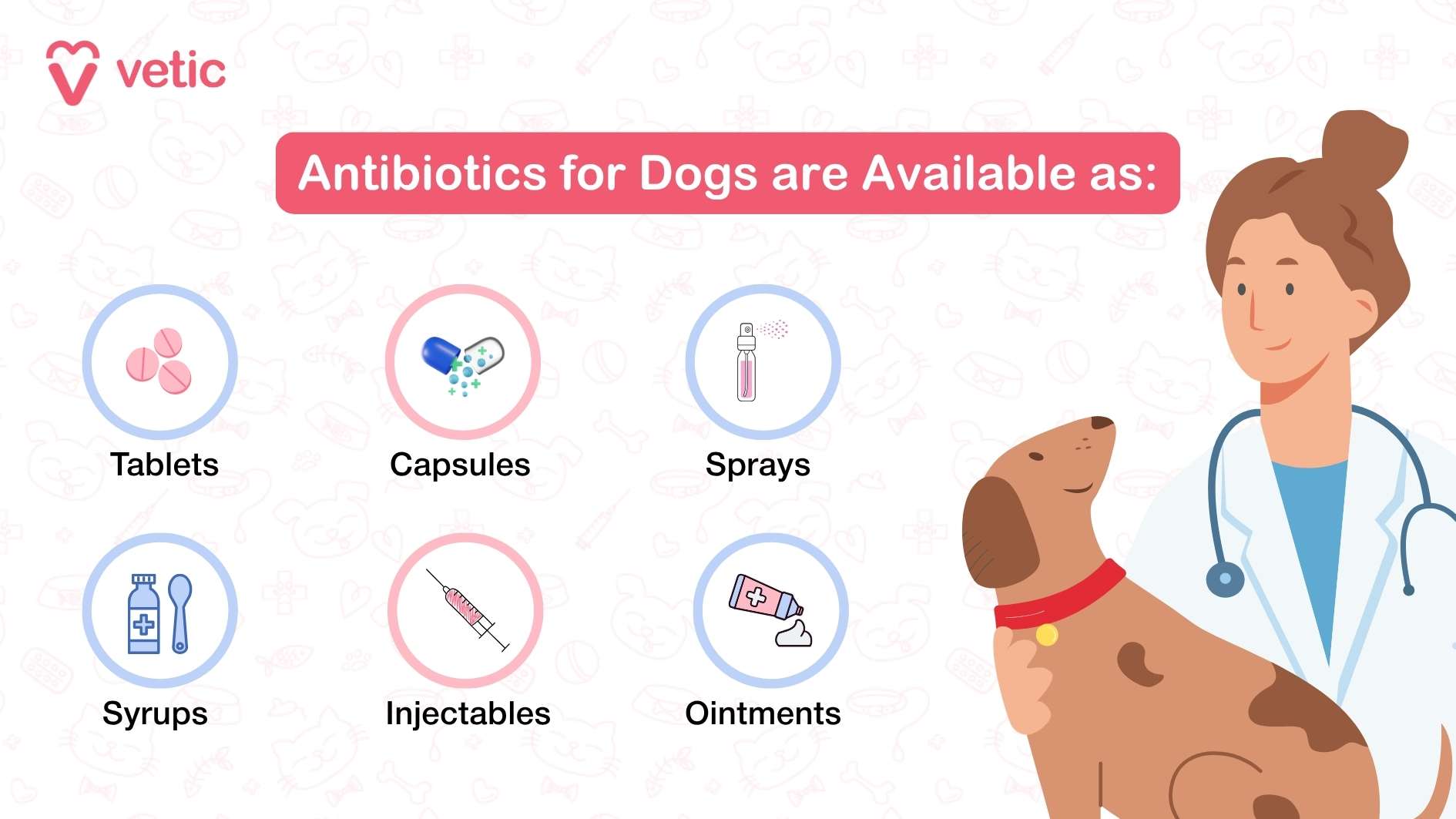
How do I administer liquid antibiotics to my dog?
Use a dosing syringe with the tip placed between cheek and gum, delivering the liquid slowly to prevent aspiration. Hold the muzzle gently to encourage swallowing. Reward with praise or a small treat afterward.
What if my dog spits out the antibiotic pill?
Try hiding the tablet in a small portion of cheese or canned food, or use commercial pill pockets. If persistent, ask your veterinarian about liquid formulations or injectable alternatives. Consistent administration is crucial for efficacy. Consult your veterinarian for long-acting antibiotic alternatives.
Can I split antibiotic tablets meant for dogs?
Only split scored tablets under veterinary guidance; unscored tablets may have uneven active ingredient distribution. Many modern formulations use extended-release coatings or specific bioavailability considerations. Tablet splitting can compromise dose accuracy. Consult your vet before altering any medication form.
Why do some antibiotic courses last longer than others?
Treatment duration depends on infection type and location; superficial skin infections often need 2–3 weeks, whereas deep bone infections require 6–8 weeks. Intracellular infections may need prolonged therapy. Longer courses ensure eradication in protected tissues.
Why do dogs need to complete the course of antibiotics?
Completing the full course eradicates residual bacteria and prevents resistance development. Premature discontinuation allows surviving bacteria to repopulate and mutate. Trust the prescribed duration. “Even if your dog looks healthy, the infection might still be present,” says Dr Abhishek Choudhary. This practice maintains long-term antibiotic efficacy.
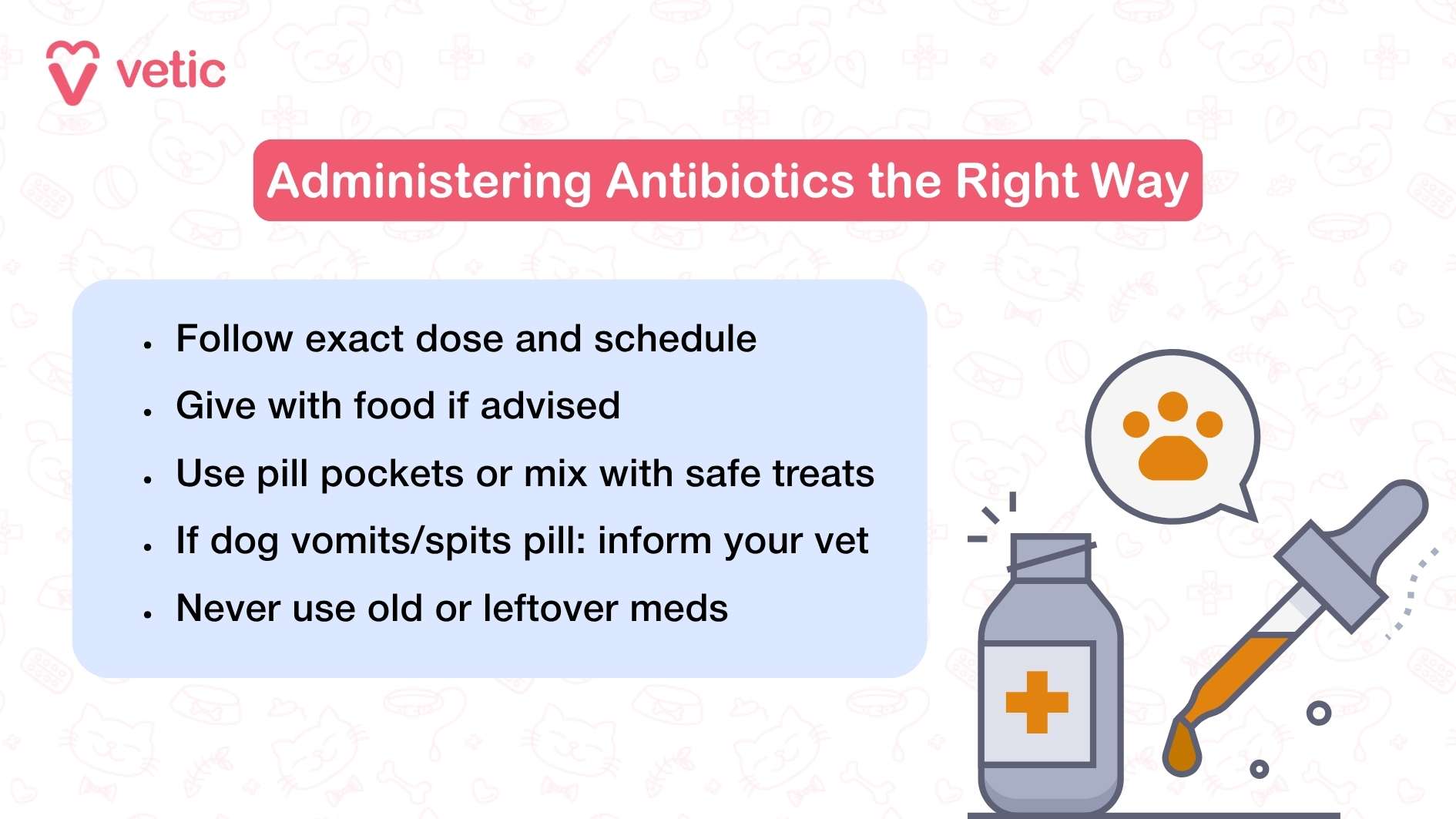
Can the antibiotic dosage change based on the dog’s weight or breed?
Yes. Dosages are weight-based; some breeds or geriatric dogs may require adjustments due to physiological differences. Adjust dosing for each patient’s physiology to ensure safety.
Can I use leftover antibiotics from a previous prescription?
No. Leftovers risk improper dosing, outdated expiration, or incorrect antibiotic choice for the new condition. Never self-prescribe—each infection requires targeted therapy. Always consult your veterinarian for a fresh culture and valid prescription.
Side Effects of Antibiotics for Dogs and Their Management
What are the common side effects of antibiotics in dogs?
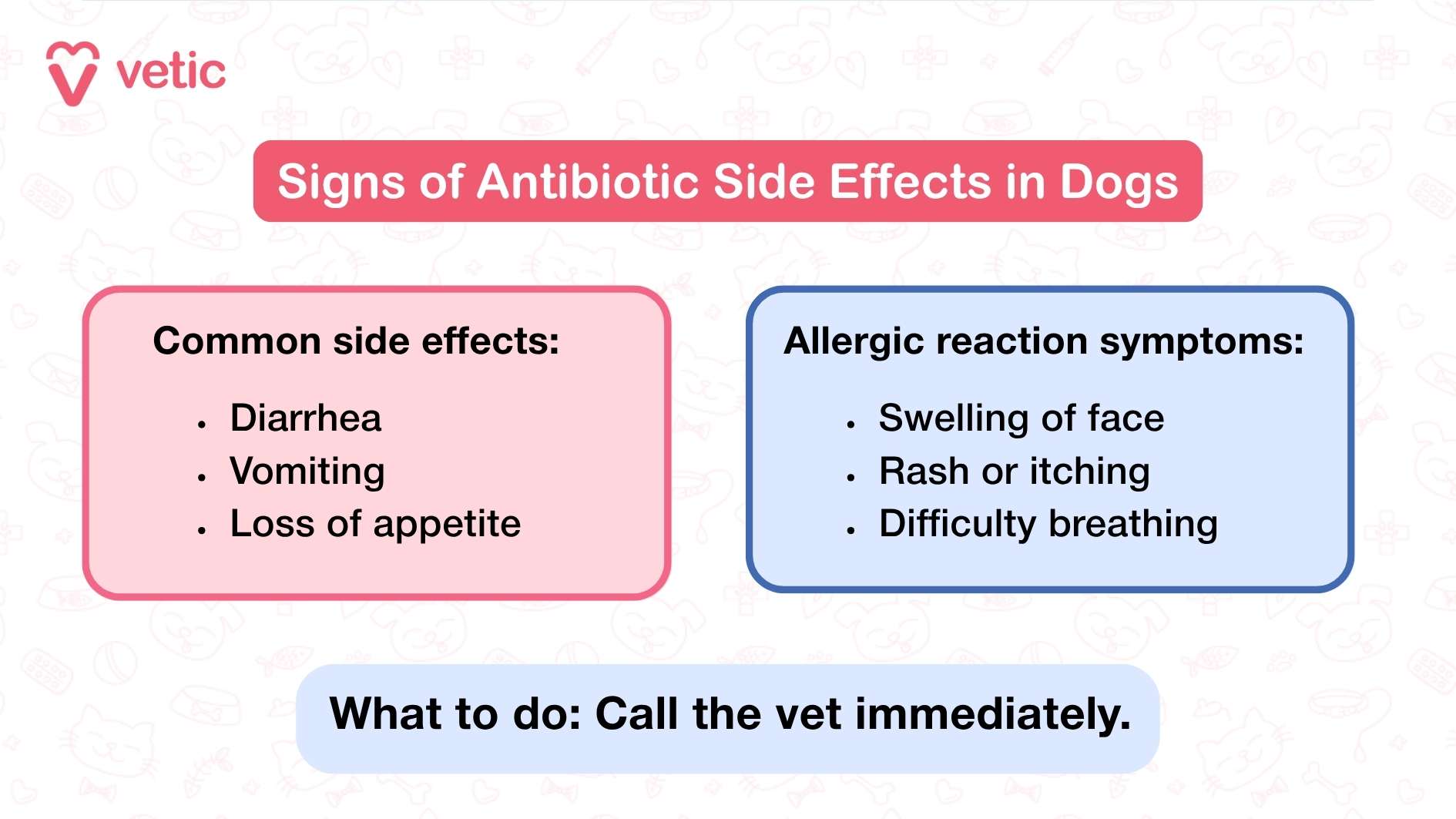
Diarrhea, vomiting, and anorexia occur in up to 15 percent of cases, especially with broad-spectrum agents. Less common effects include hepatotoxicity or nephrotoxicity. Monitor for GI signs during therapy. Report severe reactions promptly to adjust drugs or dosing.
Can antibiotics cause diarrhea in dogs?
Yes. Broad-spectrum antibiotics disrupt normal gut flora, leading to dysbiosis and diarrhea. Metronidazole can both treat and cause diarrhea due to its effect on anaerobic bacteria. Introduce probiotics during therapy to maintain microbial balance.
Do antibiotics affect a dog’s appetite?
Some antibiotics have a bitter taste or cause nausea, reducing appetite for 1–2 days. Offering bland food or divided doses can help maintain intake. Monitor weight and hydration closely; contact your vet if anorexia persists over 48 hours.
Can dogs be allergic to antibiotics?
Yes. Penicillins and sulfonamides are the most common allergens, triggering hypersensitivity reactions ranging from mild dermatitis to anaphylaxis. Always ask about previous reactions and monitor first doses. If suspected, discontinue immediately and seek emergency care.
What are signs of an allergic reaction to antibiotics in dogs?
Swelling of face or limbs, hives, itching, respiratory distress, vomiting, and diarrhea may indicate an allergic reaction. Anaphylaxis signs include collapse, hypotension, and difficulty breathing. Rapid onset requires immediate antihistamine and veterinary intervention.
How do I manage antibiotic side effects in my dog?
Report adverse signs immediately. Vets may reduce dosage, switch to a different class, or add probiotics to restore gut flora. Supportive care such as antiemetics and a bland diet can alleviate GI upset.
Conclusion
While dogs need antibiotics, it’s not wise or adviced to use them indiscriminately. Antibiotics play a vital role in treating bacterial infections in dogs, but they are not a one-size-fits-all solution. Understanding when and how to use them — and when not to — is essential for your dog’s safety and long-term health. Responsible antibiotic use helps avoid dangerous side effects, prevents antimicrobial resistance, and ensures your dog gets the care they truly need.
If your dog shows signs of infection or is not responding to treatment, don’t guess or self-medicate. Contact a licensed veterinarian immediately. A proper diagnosis and tailored treatment plan are the best way to protect your dog’s health — now and in the future.
Have questions about your dog’s antibiotics or symptoms? Book a consultation with a Vetic veterinarian today.
References:

